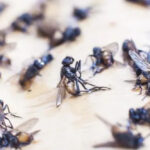Air travel with an infant can seem daunting, but it’s often perfectly safe for healthy, full-term babies who are a few weeks old. However, there are important considerations to ensure your baby’s well-being and your peace of mind when flying.
For infants born prematurely, or those with existing health conditions, particularly concerning the heart or lungs, air travel requires careful consideration. Premature babies may need more time for their lungs to fully develop, and the pressurized cabin environment might pose challenges. It’s crucial to consult with a healthcare professional before flying or visiting high-altitude locations with a pre-term infant. Similarly, any infant with pre-existing heart or lung issues should be evaluated by a doctor to get clearance for air travel.
When planning your trip, several factors come into play, including your baby’s age and overall health, as well as practical aspects of flying that can affect both you and your little one.
Age and Health Considerations for Infant Air Travel
Medical experts generally advise against air travel for newborns within the first seven days of life. Some healthcare professionals extend this recommendation, suggesting waiting for the first few months. This cautious approach is due to a newborn’s developing immune system and the potential need for close medical observation should any illness arise.
While babies and adults share similar risks of exposure to germs during travel, infants have immature immune systems, making them more vulnerable. Illnesses in babies often require closer medical attention. Therefore, it’s prudent to be extra cautious and consider your baby’s health status before flying.
Caregiver Health and Travel Planning
Your health as a caregiver is also paramount when flying with an infant. Travel can be physically demanding, leading to sleep deprivation and increased stress. Adults are also susceptible to new germs and illnesses, especially in crowded travel environments.
Staying informed about illnesses prevalent in your departure location and destination is vital for preparation. Practicing diligent hygiene, especially frequent handwashing, becomes even more crucial when traveling with a baby to minimize the spread of germs.
Managing Baby’s Ear Discomfort During Flights
Changes in cabin pressure during takeoff and landing can cause ear discomfort for babies. A simple yet effective way to alleviate this is by encouraging your baby to suck. Breastfeeding, bottle-feeding, or offering a pacifier during takeoff and initial descent can help equalize pressure in their ears. Timing feedings to coincide with these phases of the flight can be particularly helpful.
Alt text: Infant comfortably sucking on a pacifier during airplane takeoff, helping to alleviate ear pressure.
If your baby has recently undergone ear surgery or is currently battling an ear infection, it’s essential to consult with a healthcare professional to determine when it’s safe for them to fly.
Furthermore, airplane cabins can be noisy, especially during takeoff. To protect your baby’s sensitive hearing and promote restful sleep, consider using cotton balls, noise-canceling headphones designed for infants, or small, soft earplugs to reduce noise exposure.
Infant Safety Seats on Airplanes
While airlines often permit infants to sit on a caregiver’s lap during flights, the Federal Aviation Administration (FAA) strongly recommends securing infants in certified car safety seats. Most infant car seats are approved for air travel.
If you prefer your infant to travel in a car seat but haven’t purchased a separate ticket, inquire about seat availability when boarding. If there are unoccupied seats, the airline might be able to accommodate your request and assign one for your infant’s car seat.
It’s crucial to resist the urge to use medications like diphenhydramine (Benadryl) to sedate your baby for the flight. This practice is not recommended by medical professionals and can sometimes have the opposite effect, causing agitation instead of drowsiness.
Flying with an infant requires extra planning and awareness, but by considering these safety and comfort tips, you can make air travel a smoother experience for both you and your baby.
References:
- Jana LA, et al. Flying the family-friendly skies. In: Heading Home With Your Newborn: From Birth to Reality. 4th ed. American Academy of Pediatrics; 2020.
- Newborn-flying and mountain travel. Pediatric Patient Education. https://publications.aap.org/patiented. Accessed Oct. 30, 2023.
- Centers for Disease Control and Prevention. Traveling safely with infants & children. In: CDC Yellow Book 2024. https://wwwnc.cdc.gov/travel/yellowbook/2024/family/infants-and-children. Accessed Oct. 30, 2023.
- AskMayoExpert. Infant Fever. Accessed Nov. 18, 2023.
- Schmitt BD. Pediatric Telephone Protocols: Office Version. 17th ed. American Academy of Pediatrics; 2021.
- Child safety on airplanes. Federal Aviation Administration. https://www.faa.gov/travelers/fly_children/. Accessed Nov. 18, 2023.
